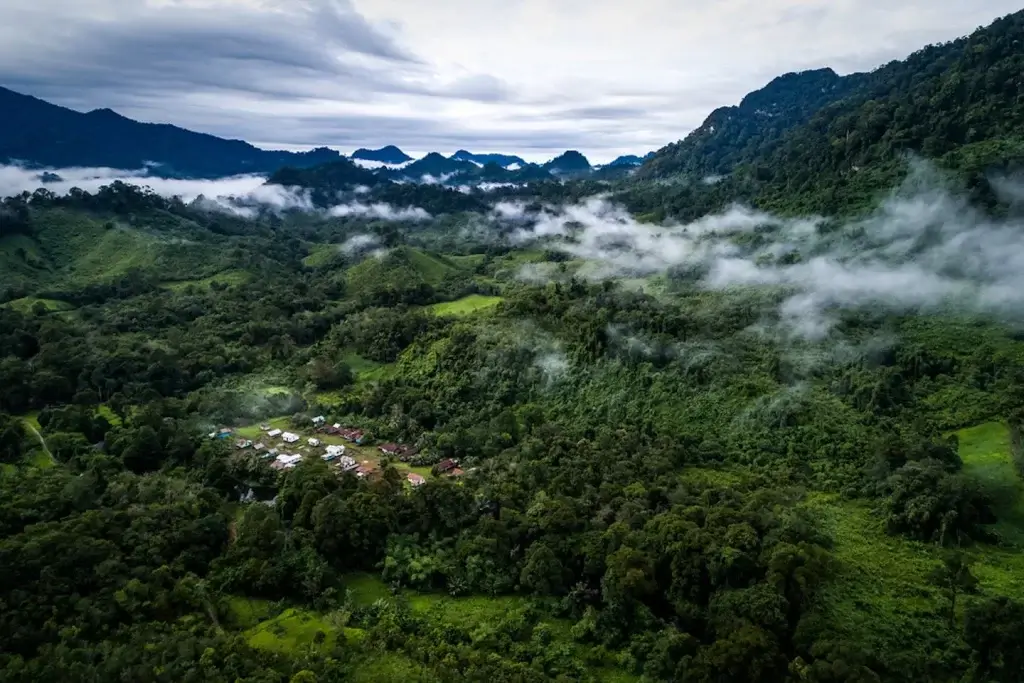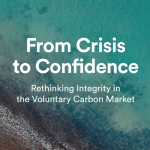The savings of our forests

by the Stanford Law School Lab
David J. Hayes
eyesonindonesia
Amsterdam, July 14th 2023 — Forests provide a critically-important nature-based tool to combat the actual climate crisis. During the coming days and weeks eyesonindonesia is addressing the opportunities to deploy climate-smart forestry practices to remove additional quantities of climate-harming carbon from the atmosphere.
The report written by David J. Hayes, notes that the inability to reliably track and quantify carbon removals and other co-benefits from forestry practices is holding back wider adoption of such practices.
It recommends specific steps that should be taken to advance the measurement, monitoring, verification and reporting of carbon removals and other benefits associated with climate-smart forestry practices.
With the backing of solid measurement and monitoring, governmental authorities and private parties can more confidently incentivize climate-smart forestry practices through a variety of potential mechanisms such as conservation grants, procurement preferences, premium pricing for climate-smart forestry products and better functioning carbon markets.
Prime forestry-related carbon removal opportunities include agroforestry, reforestation, urban forestry, improved forest management and long-lived wood products.

Part I
I. EXECUTIVE SUMMARY Through nature’s extraordinary process of photosynthesis, forests across the globe are capturing and storing enormous quantities of the excess carbon in the atmosphere that are causing climate change. Recent studies indicate that the world’s forests sequestered about twice as much carbon dioxide as they emitted between 2001 and 2019 — forming a “carbon sink” that absorbs a net 7.6 billion metric tons of carbon dioxide per year, 1.5 times more carbon than the United States emits annually. 1 This is why trees and forests are one of the world’s most valuable weapons in the fight against climate change — and why so much attention is directed at stopping the widespread deforestation underway in a number of nations. 2 What is known, and what is knowable about forests. We know that forests are major contributors to the fight against climate change and that they are poised to do more.
Even though forests are under significant stresses from climate-infused catastrophic wildfires, insect infestations and long-term drought. Forests are annually removing and storing the equivalent of 10 to 15 percent of greenhouse gas emissions in the U.S. alone.

4 Contributions are coming from the most obvious forest sources, such our National Forests, National Parks, and other federal, state, tribal and local forest preserves. 5 But they are also coming from the five billion trees and more than 100 million acres of tree cover in U.S. cities and towns6 and the billions of additional trees that are spread throughout America’s farms and pasture lands.7 As described more fully below, we also know that pursuing “climate-smart” forestry practices like reforestation, integrating more trees in cropland and pasture lands (agroforestry), and expanding urban forests will capture and sequester more carbon in trees. And we know that climate-smart forestry practices typically provide additional valuable services beyond carbon removal. They filter clean water for communities, provide wildlife habitat, promote biodiversity, and increase the resilience of landscapes in the face of extreme heat, drought, floods and other climaterelated impacts.8 Finally, we know that wildfires and other disasters can strike forests and cut off these benefits, pending regeneration through natural or assisted means. However, what we do not know with confidence is how much and for how long pursuing climate-smart forestry practices will remove additional carbon from the atmosphere and sequester it in trees and in wood products. But this information is knowable. Current forestry data sets — including the Forest Service’s valuable FIA (Forest Inventory & Analysis) data system — are poised to sync up with powerful new remote sensing capabilities, machine learning and sophisticated modeling and data management tools to generate solid estimates of how much additional carbon is being captured through climate-smart forestry practices. The opportunity. As described below, significant new federal funding and authority that is now available provides an unprecedented opportunity for the U.S. government to work with experts from government and the private sector to develop a suite of measurement, monitoring, reporting and verification (abbreviated herein as “MRV” or “measurement and monitoring”) tools that can convert knowable climate-smart forestry benefits into confirmed, known benefits. With the backing of solid measurement and monitoring, governmental authorities and private parties can more confidently incentivize climate-smart forestry practices through a variety of potential mechanisms such as conservation grants, procurement preferences, premium pricing for climate-smart forestry products and better functioning carbon markets. More specifically, with modern measurement and monitoring tools, baseline conditions and “additional” carbon captured and stored through deployment of climate-smart forestry practices can be identified. Likewise, improved monitoring can address so-called “permanence” issues by confirming that atmospheric removals of carbon are remaining stored in forests over defined time periods that can extend for decades, and potentially longer. And, regardless of whether those removals remain in place a hundred years from now, there may be compelling climate reasons to incentivize additional carbon removals from the atmosphere over the critically important transition period, when legacy fossil fuel use is continuing to pump excess carbon dioxide and other greenhouse gas (“GHG”) pollutants into the atmosphere.9 As with other nature-based solutions, however, climate-smart forestry practices need not be incentivized based on carbon benefits alone. Climate-smart practices’ co-benefits like clean water, biodiversity, and increased resilience to 2 heat, drought, floods and other impacts can and should provide additional support for incentivizing climate-smart forestry practices.
eyesonindonesia/ David J Hayes LSL stanford









